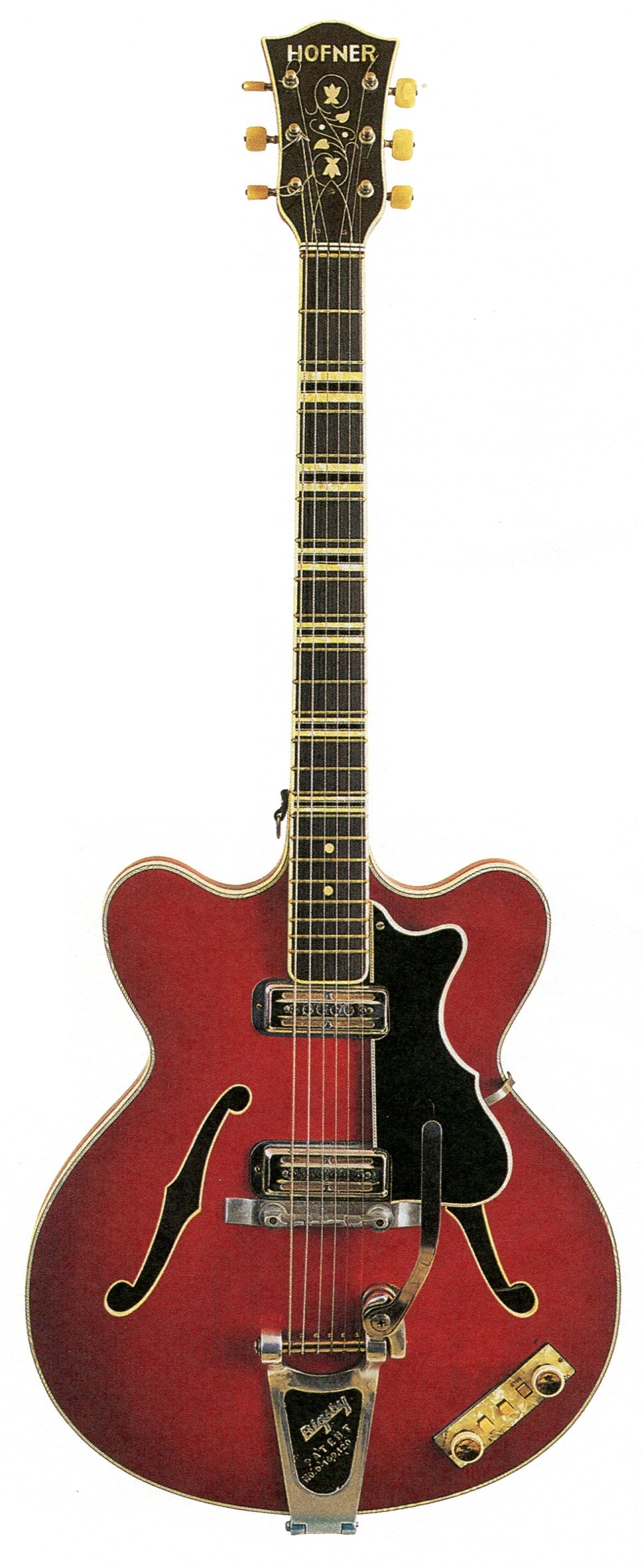Hofner Verithin

Hofner’s established models came in full-depth (3 inches or more) and thin (around 2 inches), but in 1960 the Hofner Verithin took it all the way down to 1.25 inches.
The anorexic body was complemented by a thin “Slendaneck”. The influence of Gibson’s ES-335 model, which had been introduced in 1958, was obvious in Verithin’s double-cutaway shape – albeit with squashed-down horns. Unlike the semi-hollow 335, however, which had a laminated maple top and a solid block down the center of the body, the Verithin maintained elements of traditional archtop design with a fully hollow body and a braced spruce top.
The Verithin introduced a new look to the Hofner line with it’s full-width fingerboard markers of pearloid and tortoise, and the contrasting bars would become a Hofner signature look as they appeared on one new model after another in the 1960s. Hofner changed the Verithin’s cutaways to a pointed shape in 1966, but it languished in the shadows of the more traditional archtops and disappeared in the early 1970s.
